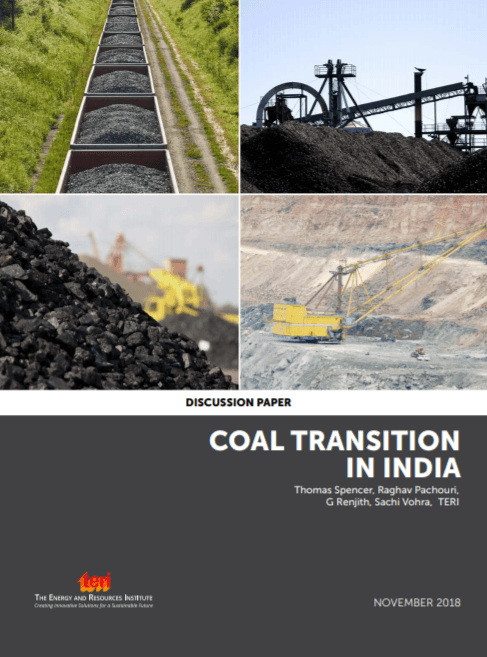COAL TRANSITION IN INDIA

Key Findings
- On an LCOE basis, renewables are now significantly cheaper than new coal, and cheaper than the variable costs of one half to one quarter of the existing installed coal capacity. From an economic perspective, it would make sense to substitute new renewables for existing coal, even if sunk capital costs were treated as given (as is the case with current contract structure based on a two-part tariff). There is thus considerable opportunity to lower power costs to
the economy through continued growth of renewables. - Even with a significant cost increment to take into account grid integration costs, renewables remain highly competitive against alternative
sources of generation. Our estimates, based on international meta-reviews, suggest that the grid integration cost of renewables would not reverse the relative competitiveness of renewables over coal, at the levels of penetration we are likely to see in the 2020s. However, grid integration is likely to be a significant technical challenge. The scale and speed of the transition in the coal power sector will depend on the effectiveness of these efforts to flexibilize the Indian grid. Given the importance of solar, particular importance needs to be given to storage and demand response. - The rate of electricity demand growth poses an additional challenge to coal sector transition. On average between now and 2030, about 100 TWh of electricity demand will be added each year. Meeting this only from wind and solar would require
annual additions in the order of 40-45GW each year between now and 2030.40 This is challenging from the perspective of supply chain growth, landacquisition, financing, and evacuation. At the same time, the financing, infrastructure and socio-economic
conditions for coal, hydro, or gas to fill in any slack
appear equally challenging. - The labour market impacts of coal transition do not seem to pose a challenge. Firstly, in the Indian context, we are not talking of an abrupt decline in coal consumption, but rather a mid-term scenario of foregone growth, peak and decline. By 2030, in an
aggressive renewables scenario, steam coal demand for grid power could peak. This gives time to prepare for transition, including by controlling the expansion
of production and guiding new entrants away from the coal mining labour force. Secondly, India’s labour market transition is so vast as to make the coal sectorspecific transition a drop in the ocean. - Coal demand in the industry sector – captive power and final industrial consumption – are often overlooked. Coal demand for final industry consumption is projected to grow several percentage points faster than steam coal demand, while captive
power from coal could also grow significantly. More focus could be put on providing substitutes to industrial coal use, in particular biomass and electrification for industries than can further electrify industrial production.